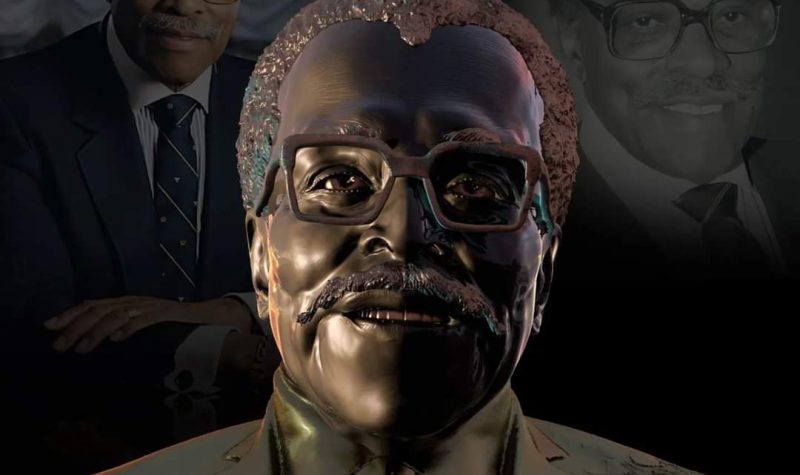Correction Oct. 9 2023: Lincoln Alexander was referred to as governor general, when he was actually lieutenant-governor. This error has led to a misquote from Quentin VerCetty. He used Alexanders proper title but was quoted using 'governor general.' Language was also updated regarding Alexanders service to include where he served in the military and that he did not see any combat. This was done to not mislead any reader and remove the any vague language.
To celebrate the achievements of Lincoln Alexander, the first Black cabinet minister in Canada, a Black Toronto artist has been selected to create a bust of Alexander.
Canadian artist Quentin VerCetty was chosen to make the sculpture of Alexander. VerCetty is an OCAD graduate and first worked on sculpting while attending. During his schooling, he went on an exchange in Florence to further study the art of sculpting.
The bust is to be unveiled on Jan. 21 2024 in Queen’s Park. With the future introduction of the monument, VerCetty says it will be the first new installation in the park in almost a century.
Alexander in his lifetime was a veteran, lawyer and politician. In the Second World War he served in the Royal Canadian Air Force as a wireless operator reaching the rank of corporal. Due to poor eyesight Alexander never saw combat and was stationed in Porage La Prairie, Manitoba. After the war he studied law at Osgoode Hall and begun his life as a lawyer. By 1968 he was elected to the House of Commons. In 1985 he was elected as the lieutenant-governor of Ontario until 1991. Alexander passed away at 90 years old in 2012.
While VerCetty was chosen for his merit as an artist, he has crossed paths with Alexander and his family on multiple occasions. VerCetty went to Lincoln M. Alexander Secondary School and his wife grew up with Alexander's grandkids. He also met Alexander when he came to speak at his school.
“I used to hang out a lot in the hallways. I used to skip classes. There was a specific corner in the hallway that all the cool guys would hang out. And, unfortunately, it's right in the sight line of when you enter the building,” says VerCetty. “Of course, [Alexander] walks through the front doors, and he just sees a bunch of young Black kids hanging out in the hallway, and he just walks straight up to us. And [says] ‘how are you guys doing?’ then he looked at me specifically and said ‘I see great things in you.’”
As VerCetty got older, he says he resonated more with Alexander and his life story which he aims to put into the sculpture. Vercutty has been given full creative freedom when making the monument.
VerCetty packs his work with symbolism around his subject's life. He says that the hardest part of the bust is getting his smile just right.
“He has an amazing smile and a very unique cheekbone structure. I really want to capture that smile, he [was] always smiling. I'm trying to capture him at his prime at a specific age when he first became lieutenant-governor,” says VerCetty.
He says that capturing the era of Alexander has been difficult as “the resources are not as diverse.” Now in the creation of the sculpture, VerCetty has been speaking with Alexander’s family. The family has been providing VerCetty with younger photos of Alexander to help.
The Alexander bust is not VerCetty’s first time working on a sculpture of a prominent Black figure in Canadian history. VerCetty created the Joshua Glover memorial bust in Joshua Glover Park.
“I think a lot of that came out of the success of winning the competition from the Joshua Glover monument…his story kind of crosses borders and is international,” says VerCetty. “I think the success from that competition and from that creation that I made, really caught the eye of the committee who was making this bust.”
VerCetty has been doing an audit of monuments for historical Black Canadians. He says that there are only 20 sites in the country of Black Canadians. He says only two Black Candians have worked on the sculptures. Those two have made five of the 20. VerCetty says he is one of the two with the other being a mentor of his.
“I hope that [the sculpture] is not the last. I hope it opens up more doors for other artists. People are going to be inspired to think about other black Canadian leaders and people who have served our country and how we can also tell their stories,” says VerCetty.
Listen to the story below:


